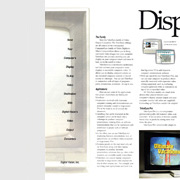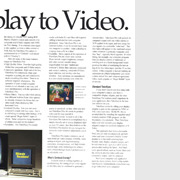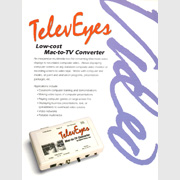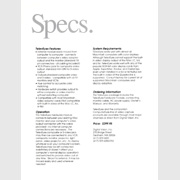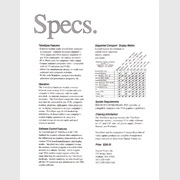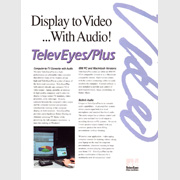
|
products
|


|
|
TelevEyes
Video Output
TelevEyes was a complementary product to the ComputerEyes family. While the latter captured images from video into the computer, TelevEyes converted the computer's display to a standard video signal that was displayable on a TV screen or recordable on a VCR.
The outputs of the early computers (Apple II, Commodore, Atari) were already standard video signals — you could use a regular TV or video monitor to display them. No TelevEyes required! But newer computers had special higher resolution displays, and their outputs weren't standard video. So if you wanted to record it on a VCR or display it on a big-screen TV, you needed TelevEyes.
The TelevEyes name was another play on words (albeit not as good as the original ComputerEyes pun). Televise ... TelevEyes ... get it?
Several models of TelevEyes were developed over the years:
- The original TelevEyes essentially just converted the computer's red/green/blue monitor signals to a standard composite video signal. It was provided with drivers that forced the computer's horizontal and vertical refresh rates to be those required to form the video signal. Versions were produced for both PC and Macintosh computers, with either NTSC or PAL video outputs.
- TelevEyes/Plus was an enhanced version of the original TelevEyes, with features that included flicker filtering and audio amplification for display presentations.
- TelevEyes/Pro was a full-fledged scan converter that required no software drivers to make it work. It converted the RGB monitor signal from both PCs and Macs to standard composite and S-video outputs, without regard to what graphics mode the computer might be running in. It had many advanced features, such as video overlay (overlaying computer graphics on top of live video for the TV weatherman or Roger Rabbit effect).
|



